Travel: A day in Rabat, Morocc0 4/11/2023
- Lili Naveh
- Apr 11, 2023
- 12 min read
Continuation of a guided group trip. which started on:
4/10 - From Tangier to Casablanca (part 1)
Rabat - the modern current capital is one of 4 historical Imperial cities of Morocco, that are distinct by their capital era,,the ruling dynasty and assigned color.
Meknes - Green (inland ) 17c - Moulay Isma'il
Fez - Blue (inland ) 14C - Marinids
Marrakesh,-Red (inland) 12 C Almohad and Saadian dynasty 16C
and Rabat - White (coast) 12 c Almohad and then 1900 - current -Alawi dynasty,

As a general rule the layout of all these cities is divided between 3 main parts:
*Medina" - the old part of a town or city, (found in many countries of North Africa, not just Morocco.) It is typically walled, and contains narrow streets, fountains, palaces and mosques. usually car-free as there is not enough space in the alleyways for cars to pass
*Qasbah" - a fortress, most commonly the citadel or fortified quarter of a city
"New Part" of town - Designed under the French Protectorate (1912 +) and after.
In Rabat as in Casablanca, Fez, Marrakesh and Meknes, the design of Rabat's new city was led by Henri Prost, with assistancein landscaping by Jean-Claude Nicolas Forestier
Rabat - The current (since 1956) Capital City of Morocco
Morocco’s modern capital Rabat was once a haven for Barbary pirates, who went so far as to establish a republic of their own,
It is located on the Atlantic Ocean at the mouth of the river Bou Regreg, opposite Salé, the city's main satellite commuter town,
Rabat was founded in 1170, as a naval base, by the Almohad Caliphate, a Berber Muslim empire which at the height of its might controlled much of the Iberian Peninsula and North Africa.
The town's main attractions relates to:
+Tourism - the Royal Palace, Hassan Tower, ramparts, and. the medina of Rabat- listed a World Heritage Site. as well as for the presence of all
+foreign embassies in Morocco that makes Rabat one of the most important cities in the country.
The history of Rabat is closely connected to that of Salé, the site which was first occupied by the Roman settlement of Sala (Shella).
During the 10th c, Salé was established by the Zanātah Imazighen (Berbers), who were Sunni Muslims, to house the nonconformist Barghawāṭah Imazighen
In the 12th c the city rejuvenation is credited to Abd al-Muʾmin, the first Almohad ruler, as a ribāṭ (fortified monastery) in which to quarter the troops for his jihad (holy war) in Spain.
It was the third Almohad sultan, Abū Yūsuf Yaʿqūb al-Manṣūr, who named the place Ribāṭ al-Fatḥ (“Camp of Conquest” with the aim to make it his capital,
Abū Yūsuf Yaʿqūb al-Manṣūr, began construction of an enormous mosque, of which the notable Tower of Hassān, (half-completed minaret) remains.
The project was abandoned after he died and Marrakech remained the capital city..
The city collapsed with the collapse of the Almohad, after a period of growth.
To the southwest of the old town are:
an archaeological museum and the city gate, Bab al-Rouah, also dating from the Almohad rule
In the 17th c, Rabat became a haven for Barbary pirates. When the French established a protectorate over Morocco in 1912 they made Rabat its administrative center.
In the 18th c Rabat was designated as an Imperial city by the Alaouite sultan Muhammad ibn Abdallah, who built the Dar al-Makhzan palace, although he did not designate any city as his capital, moving continually between Rabat, Fez and Marrakech.
Our tour of the city started in the modern part on Muhammad V main Blv
The Parliament building in the middle of the Blv. while the Mosque at its end

The Blv. also referred to by its old name Avenue Dar al-Makhzen -.'Royal Palace Avenue' and is a major thoroughfare in the modern downtown .
Its main section was created under the French Protectorate in Morocco and mostly developed between 1915 and 1932, when it was also known as Cours Lyautey.
The French created "new cities" (French: villes nouvelles) next to the older medinas that were preserved in their traditional urban form.
Avenue Dar al-Makhzen is wide well tended and is most impressive
The new urban design in the context of the French protectorate is a city within city which is is partly enclosed by the fortified wall..
The avenue's wider central segment is lined with a number of iconic buildings hosting major Moroccan institutions.
The ,French building style are fused with local architecture .White and stone as windows frames Some have Florentine Loggias and Andalusian pillars
Maroc Post office

<
Central Rabat office of Poste Maroc, designed by Adrien Laforgue and Albert Laprade, completed in 1918

Head office of Bank Al-Maghrib (until 1959 the State Bank of Morocco), designed by Auguste Cadet [fr] and Edmond Brion and completed in 1925

. > created in 2011, facing Avenue Moulay Hassan and occupying part of the former Immeuble Djazouli that hosted the directorate of postal services during the protectorate,[9]: 92-93 designed by François Robert
Former court building built in the 1920s

The Bauhouse Gare de Rabat-Ville Train Station designed by Adrien Laforgue and completed in 1923;


The Parliament of Morocco, (formerly Rabat's central court building) designed by Adrien Laforgue, completed in 1932 and repurposed as parliament in the 1970

The Parliament of Morocco , a Bicameral, Parliamentary Monarchy with
House of Councillors House of Representatives consist of 515 members
120 councilors, (like Upper house) 6 yers term
395 representatives (like lower house) 5 years term
king.- Mohammad VI

Only internal matters are dealt within the Parliament. All external affairs are dealt only by the king.- Mohammad VI who is above the parliament in this sort of Democtatura
Born( in 1963) the current King of Morocco. belongs to the 'Alawi dynasty and acceded to the throne in 1999, upon the death of his father, King Hassan II.
Mohammed has vast business holdings across several economic sectors in Morocco, His net worth has been estimated at between US$2.1 billion and over US$8.2 billion., In 2015, Forbes named him the richest king in Africa and the fifth wealthiest monarch in the world
23% are women representatives + many younger members, (since) 1996),
a change which was influenced by the kings wife - Lalla Salma Bennani -
the first wife of a Moroccan ruler who was publicly acknowledged and given a royal title
In the a multi-party system there are 36 Political Parties in Morocco
"Justice and developing" Muslim party is like the one in Turkey


At the southern end of that section is the As-Sunna Mosque, whose history dates back to the 18th c like that of the nearby Royal palace or Dar el-Makhzen
The Royal Palace or Dar al-Makhzen -
official name is El Mechouar Essaid, -.'Venue of Happiness'.

Situated in the heart of Rabat the commune of Touarga, the complex is the primary and official residence of the king of Morocco in Rabat. (out of 14 palaces around the country) but the king lives and works in many of his other royal palaces around Morocco
The current building was built in 1864 by Mohammed IV to replace the older palace.
The Alaouite sultans and kings have maintained a palace in Rabat since the 18th-ce reign of sultan Mohammed ben Abdallah, who used Rabat as one of his imperial residences
The Royal Entrance Gate
The birth of Hassan II in 1929[ and the marriage ceremony of Mohammed VI and Salma Bennani in 2002.took place in this palace.
Though the exterior is modest, the real and regal beauty can be appreciated only inside
The building is an example of Moroccan art. Surrounded by an enclosure, its main entrance overlooks a vast esplanade, the Mechouar, is used for the outdoors royal ceremonies.
The palace complex also contains:
Mosque el Faeh , gifted by the city of Faeh, is called the Royal Mosque and is located just next to the Royale Palace, It is where the kings go to pray. The mosque is very beautiful, made in a modern style with white walls and a green roof. Non-
The minarets are always square and not round, like they are in the Ottoman sphere which Morocco was never under its rule and influence.
The Collège Royal (founded in 1957), a school for senior members of the royal family,[, a cookery school, and a ground floor National library built to contain the manuscript collection of Hassan I
Tourists are allowed to enter the grounds of the Palace and Muslims are not allowed to enter the Mosque el Faeh., but the complex can be on view from the front gardens.

The King is always accompanied by units of the Royal Guard when on Moroccan soil.
The Moroccan Royal Guard -Garde royale marocaine,
Officially part of the Royal Moroccan Army. the Guard is under the direct operational control of the Royal Military Household of the King. and its sole duty of the guard is to provide for the security and safety of the King and royal family of Morocco.
All members of the Royal Guard wear a red beret. Red full dress uniforms of traditional style and white in summer.
2500 black workers with blue head scarf live in the royal compound's ground do all the needed services for the king.. Tuarek tribes were brought from the desert- military slavery brought from chad Mauritania Niger.
The Alaouite Sultan Moulay Ismail created the 'Abid al-Bukhari at the beginning of the 18th c -a military corps of black slaves organized into permanent infantry and cavalry units. The corps was unofficially referred to as the "Black Guard" because its members were recruited from the Haratin, a black people from southern Morocco and/or originally from Sub-Saharan Africa, as well as from other black inhabitants of the region. The name 'Abid al-Bukhari -'Slaves of al-Būkhārī' came from their practice of swearing their oaths of service upon a copy of the Sahih al-Bukhari, a famous collection of hadiths compiled by Muhammad al-Bukhar
Next driving toward Chella/ Sala
Chella
Located to the southeast of medieval Rabat, the complex served as a walled royal necropolis .on the slope of a hill overlooking the spectacular view of river Bou Regreg which forms a delta as it flows into the Atlantic Ocean


Chella was in use by for the Merinid dynasty from the late t13th to the mid-14th C taking its name from the Phoenician and Roman settlement of Sala Colonia, amongst whose ruins the necropolis was built. It was first patronized as an Islamic burial site in 1284, when the Merinid emir Abū Yūsuf Yaʾqūb buried his wife, al-Ḥurr Umm al-ʿIzz.
The military importance of this area is conveyed by the fortified nature of the site,, built of mud pressed walls.
The group was welcomed at the main gate by Berber music players with shell beads hats customary of Southern indigenous Ignou tribes from the Sahara .
(More on Berber people)
The music engulfed some members of the group, who joined in dancing
More then impressed by the site itself, I was smitten by the open view observed off the hill: the river, the delta, the skly-line of the newly constructed rocket Mohammed VI Tower and the the Zaha Hadid's Grand Theater of Rabat



Rabat Grand Theater

The large performing arts center structure in a fluid sculptural wave form is situated between the ancient cities of Rabat and Salé.
The building designed by Zaha Hadid's inspiration of the Bouregreg River includes an 1800-seat interior theater and a 7000-seat open-air amphitheatre.
It will host ballet, opera, symphony, and philharmonic performances.
Planning began for the project in 2010, construction officially started in 2014. and completion of the project was scheduled for late 2019, but it is dueto open later in 2023.
The building is among the last designed by Zaha Hadid before her passing in 2016
The construction of the theater is part of a wider national initiative by King Mohammed VI to promote the arts and cultural development. on the shores of the Bou Regreg River, including malls, residential areas, a national archive, a new archaeological museum, and a business district with skyscrapers on the Salé side of the river


Mohammed V was Sultan of Morocco from 1927 to 1953; and he was as Sultan again upon his return from exile in 1955, and as King from 1957 to 1961.
The modern Mausoleum, built in 1961 contains the tombs of king Mohammed V and his two sons, late King Hassan II and Prince Abdallah .
It stands on an elevated platform, that is located across from the Hassan Tower .
Men sits and read from the Quran at the site which is considered great honor.

The Tower, at a 44 m, height, is the minaret of an incomplete mosque , commissioned as part of the decision to construct a new fortified imperial capital, near the end of the 12th C, by Abu Yusuf Yaqub al-Mansur, - the third Caliph
( 1184-1199) of the Almohad Caliphate, a Berber Muslim empire in the Maghreb and Iberia.,
The sandstone tower, which progressively turned a red ochre colour over the centuries, was intended to be the largest minaret in the world, as was intended the mosque, (1191)
If completed, total dimensions were enormous for the time: 183 by 139 m) the mosque would have been the largest in the western Muslim world., larger even than the Great Mosque of Cordoba.

When al-Mansur died in 1199, construction on the mosque stopped
The tower, like the Giralda of Seville in Al Andalus (modern day Spain), was modeled on the minaret of the Koutoubia Mosque in Marrakesh, but also drew influence from the ancient Egyptian Lighthouse of Alexandria for its height and method of ascendancy, a series of ramps (instead of stairs) which would have allowed the muezzin to ride a horse to the top to issue the call to prayer
Despite all this work and expense, the Almohad capital remained at Marrakesh and was never actually moved to Rabat. However the tower, along with the few remains of the mosque and the modern Mausoleum of Mohammed V, forms an important historical and tourist complex in Rabat..
The Royal Guard at the Mausoleum

The rectangular structure, at the complex, is made in reinforced concrete covered with white marble on the exterior. which is marked by porticos of Moorish arches and a pyramidal green roof.. The mausoleum chamber is covered by a dome of mahogany wood with colored glass, while the walls are covered in zellij tiling

The complex was designed by Vietnamese architect Cong Vo Toan using traditional forms with modern materials.
The other structure on an elevated platform: a rectangular open-air pavilion with rows of arches was designed as a museum for the Alaouite dynasty.
Mohammed V died in 1961.. Construction of his mausoleum that year was commissioned by Hassan II. and involved renovations to the esplanade of the ruined Almohad-era mosque to which the Hassan Tower belonged.
Construction was completed in 1971[ and Mohammed V's body was transferred here that same year.. His son Abdallah was buried here in 1983.[ Hassan II was also buried here upon his death in 1999

Heading along and crossing the Bou Regreg River toward the Sale Jewish Cemetery



At the Sale'sCemetery/Rabbi, Raphael Encaoua

Rabat’s sister city of Salé had its own mellah - Jewish Quarter -It was an important center of Jewish intellectual thought
A tombstone confirms the existence of a Jewish presence in ancient Sala during the 2nd c. The community during the 12c in the Almohads time was prominent enough that the Spanish-Jewish philosopher Abraham ibn Daud mentions the Jewish community of Sale in his 1161 book Sefer HaKabbalah..
With the fall of the dynasty in 1269 Rabat was essentially abandoned until the 17th c. Sale, however, prospered during the reigns of the successive dynasties.
Jews lived in the Bab al-Husayn area of Sale during this period and spoke Judeo-Arabic.
After 1750 the community of Sale was absorbed by Rabat, which numbered over 6,000 people. In 1947 there were 20,000 Jews living in the region of Sale-Rabat; 12,350 lived in Rabat, and 3,150 in Sale.
However, after Morocco gained its independence in 1956 the Jews of Morocco, including those living in Rabat and Sale, began to emigrate
In 1997 there were 6,500 Jews living in Morocco, 400 in Rabat.(more here)

Sale's most famous Rabbi, Raphael Encaoua, (1848-1935) is buried in the Jewish cemetery of Sale- His tomb is the focus of a major hiloula.

Chief Rabbi Encaoua - President of the High Rabbinical Court of Morocco and a renowned lawyer throughout North Africa and Israel, Knight of the Legion of Honour, highly esteemed by the French protectorate power as well as by the Moroccan authorities. He is the author of a large number of books of jurisprudence: Qarnè Réèm, legal consultations and decisions; Paâmonè Zahab, on the Shulhan Aroukh and the Hochène Michepat; Séfère Hadad wé-Tèma, writings on the Talmud.
His rabbinic and legal stature, his righteousness, his phenomenal scholarship, his strong ties with the leaders of the protectorate, the royal house and the Muslim scholars of his time, all contributed to further enhancing his glory and that of his people towards all.
Back from Sale to Rabat

The Old Town

The old town, still surrounded by ramparts, lies near the coast. within its fortifications are the medina (old Muslim town) and the millah (Jewish quarter).
The main door to the mellah and the beautiful Medersa (Muslim religious school) were constructed by the Merenids, who had close ties to the Jews.
The term Miellah - Melach which connotes with the hebrew word - Salt provides 3 explanations to the name given to the Jewish quarter,
However no one knows for sure.
+Either it refers to the fact that Jews were merchants selling Salt.
+Or they were the "salt of the earth" successful merchants in their business
+Or because Jews were the people who used Salt to koshered their meat.
(More on Mellah)
To the north, on a cliff, at the mouth of the Bou Regreg river, opposite the city of Salé,, stands the UNESCO heritage, 12th-c fortress of Casbah des Oudaïa, with a splendid built-in 1195 Bab Oudaia. -Almohad gateway, made of a series of carved arches which makes it one of the jewels of Almohad art.
Also the oldest mosque in the capital, - Kasbah Mosque built in the mid-11th C stands there as well. The mosque was enlarged and renovated later in the 18th C


Casbah's narrow streets are lined with whitewashed houses and are known for its distinct blue and white walls, most of which were built by Muslim refugees from Spain.
Andalusian fragrant smelling gardens, and an adjoining madrasah (religious college) that houses a museum of Moroccan art. ( renovated in 1995) in a residence palace built for Moulay Ismail (between 1672- 1694,) are all worth seeing.
Modern Rabat
Rabat -,is the country's seventh-largest city with an urban population of approximately 580,000 (2014 and a metropolitan population of over 1.2 million
Rabat and Salé still maintain important textile, food processing and construction industries. The city is now the center of an important textile industry and is noted for its carpets, blankets, and leather handicrafts.
Casbah's shoreline on its picturesque views and beaches are very popular by the locals and out of townees
It has been a long day, but quite interesting and excellently guided by the 2 experts.
The previous and tonight were spent at:

Hotel Farah Rabat
Place 16th November, bd Mohammed Luyazidi + 212 5377237400
An O.K hotel
Although the Farah Rabat Hotel claims that it "overlooks the Bou Regreg river, with a breathtaking panoramic view of the river and its famous valley, the Marina and the Atlantic ocean, the view from the room I was given was of the window across of the building's interior....

To be continued.....

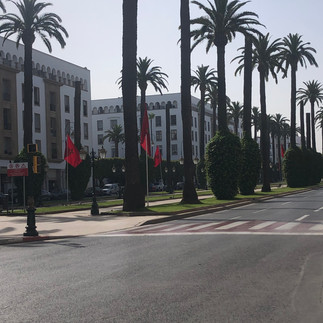
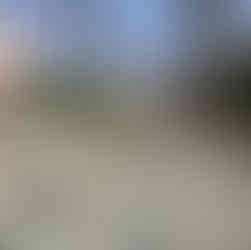

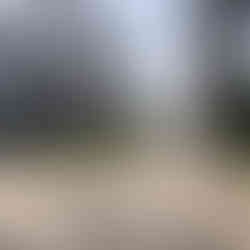

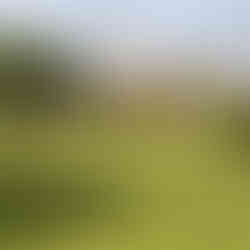

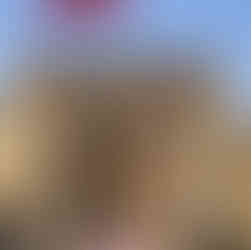

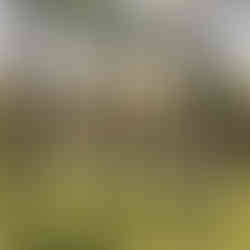


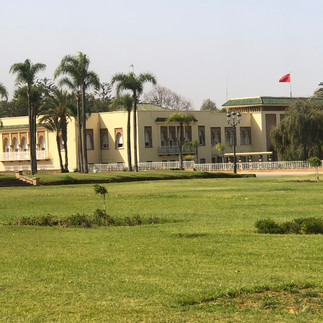
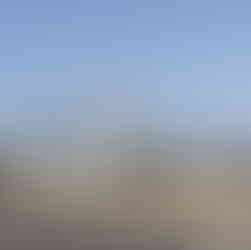



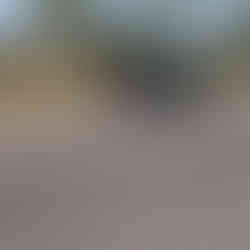

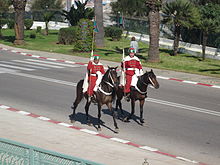
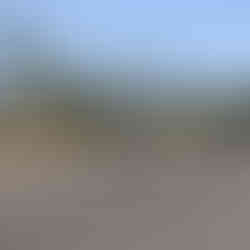

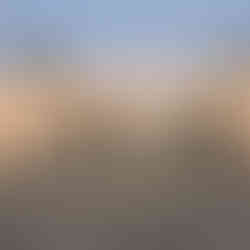


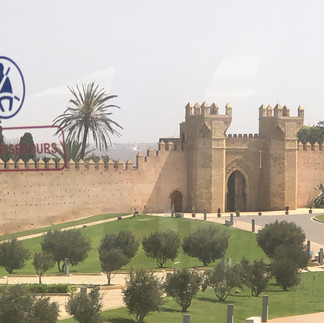
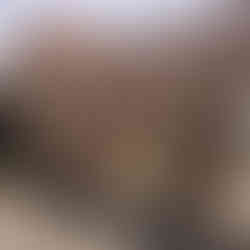

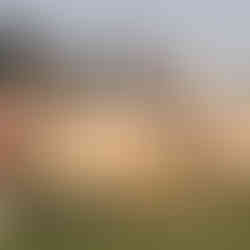





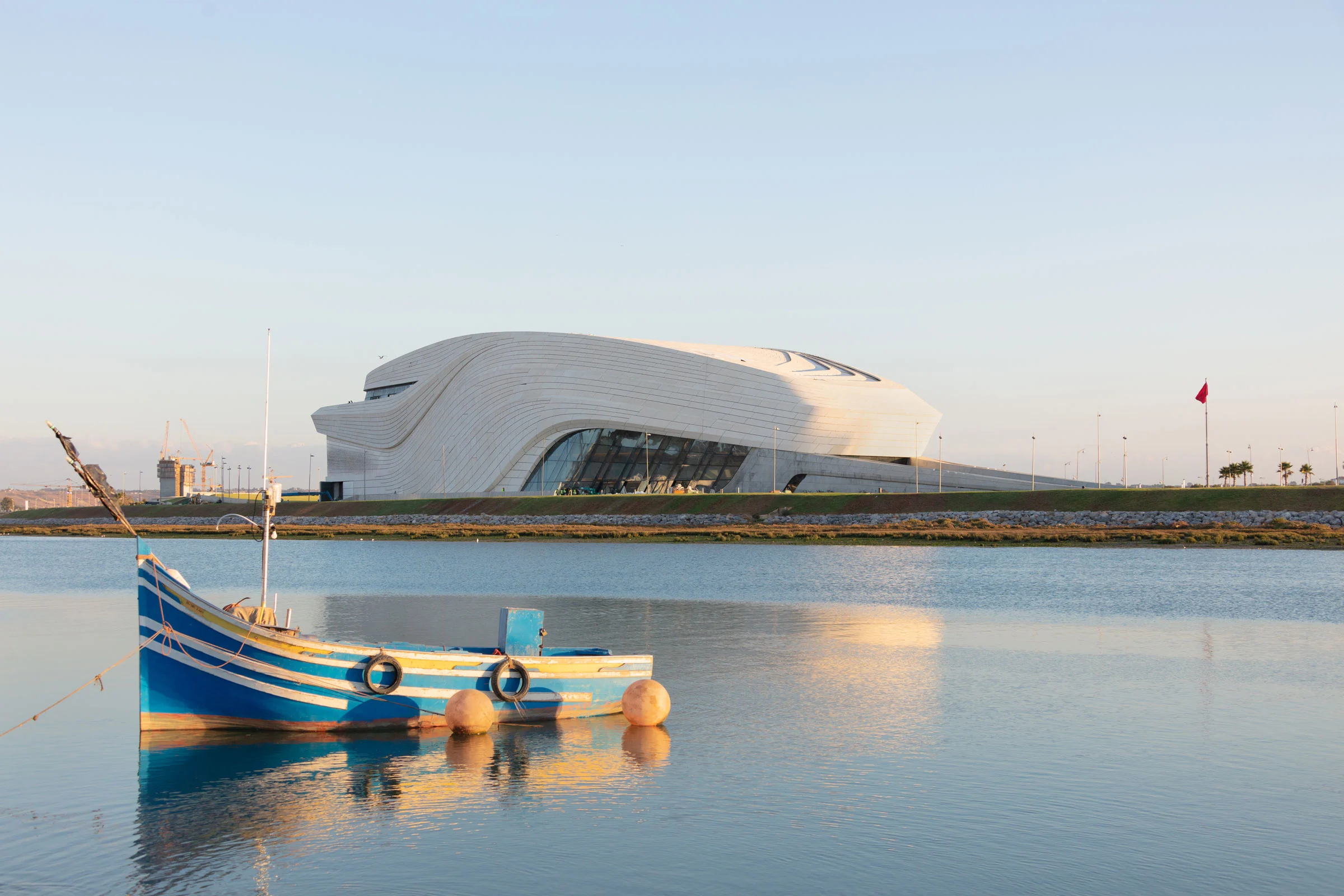



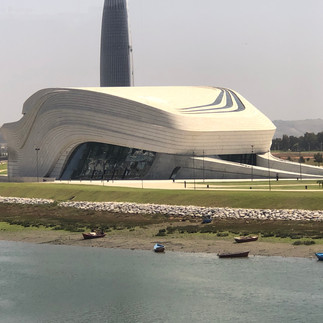





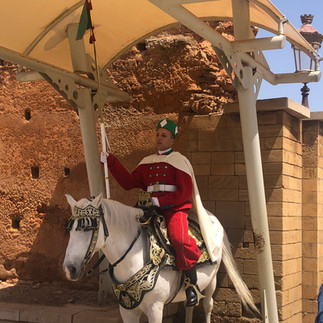




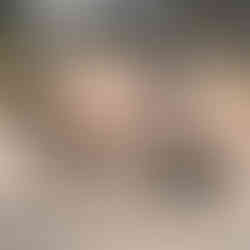


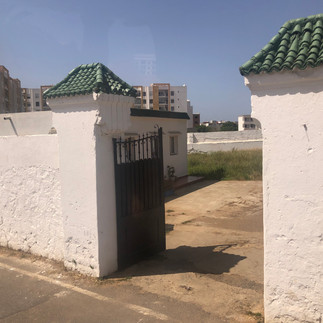

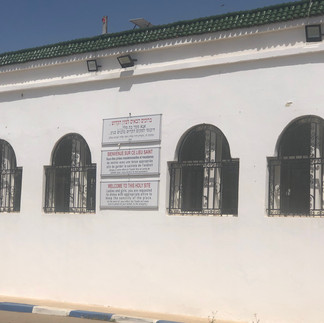
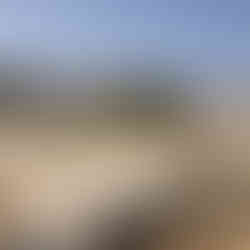

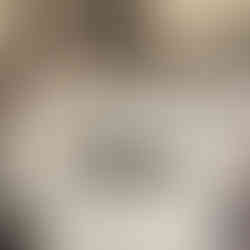

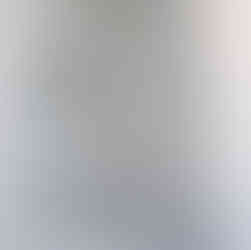





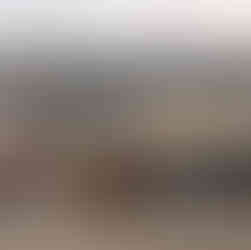


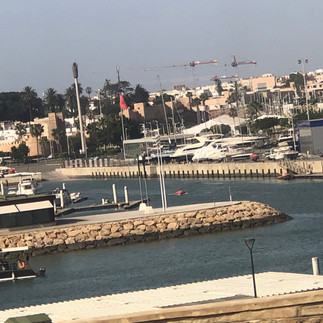

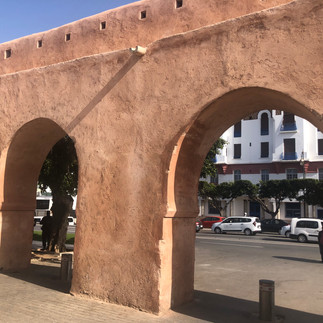

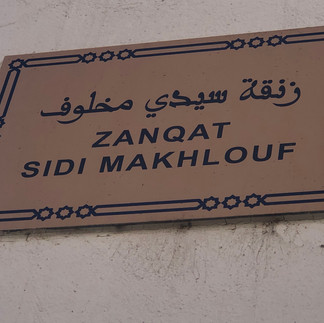
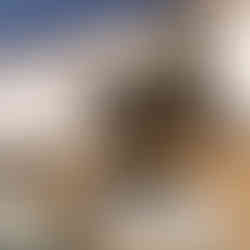




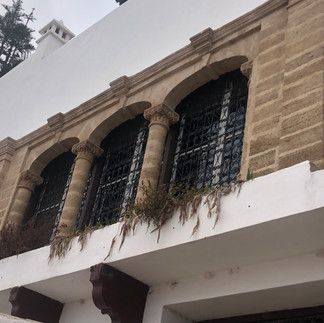




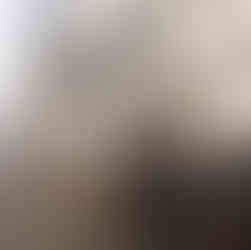

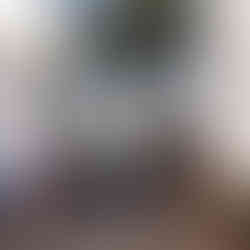







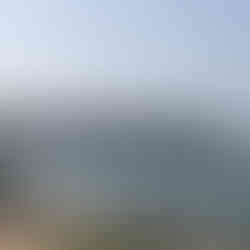








Comments